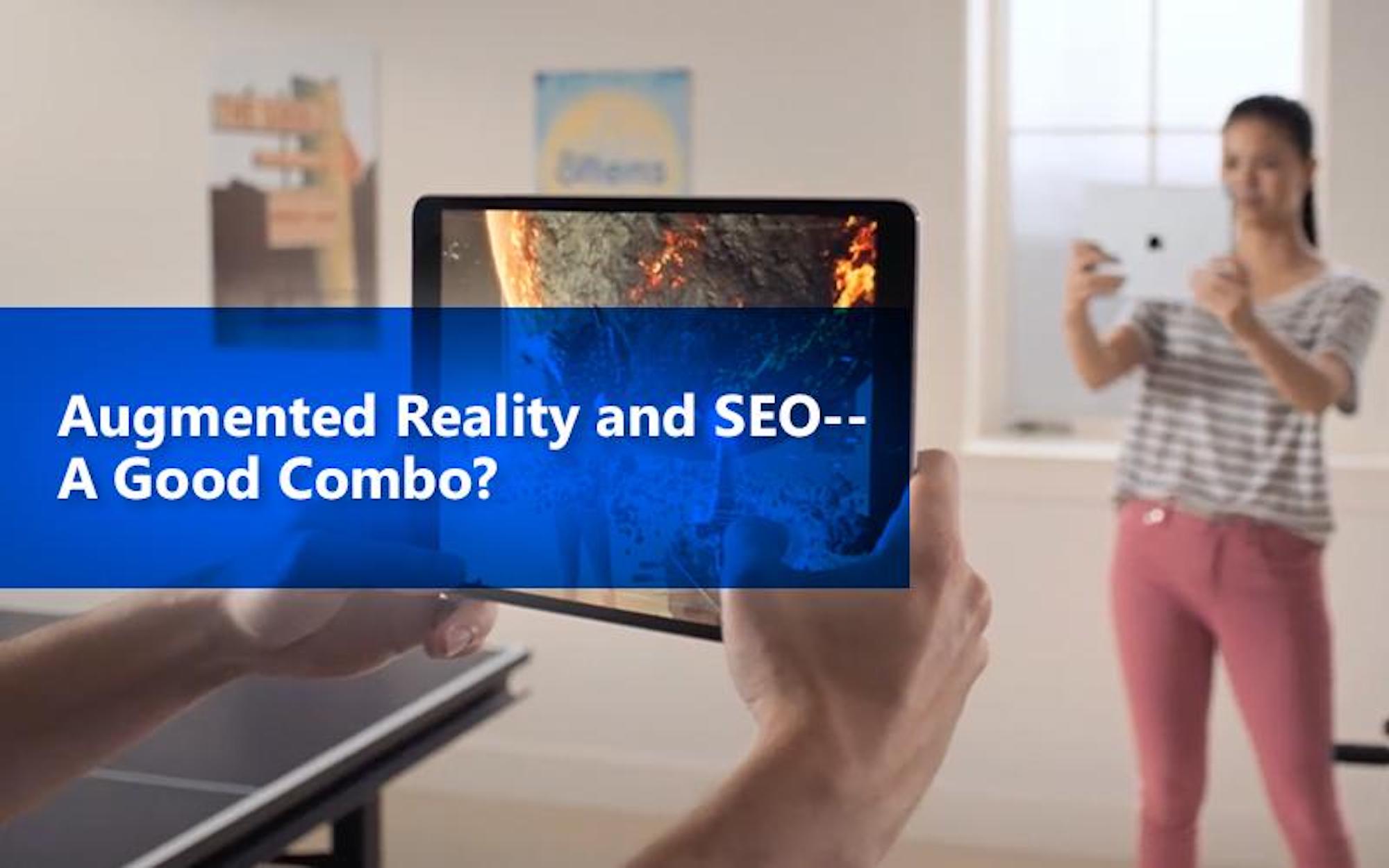Have you ever fought aliens or captured whimsical creatures in the real world while stretching and sitting on your couch?
If not, then you must have tried those face filters on Instagram. If the answer is yes, you have experienced Augment Reality (AR) without even realizing it!
Sounds futuristic right? However, in reality, it has become a huge part of the digital era we’re living in. Some even say that AR-based products would be a huge thing in the coming years.
With more and more brands starting to use augmented reality, there’s a great probability that it will begin to alter how we surf the web and organic search marketers will knock each other out based on their engagement efforts. Why? Because the more time users spend on your site or social media pages, the better the chance of turning them into paying customers.
Though the concept of AR technology is still fresh, marketers must prepare themselves sooner to stay in the game when the dust settles. In other words, if you want to future-proof your business, AR must be on your radar when mapping out an SEO plan.
How will these two blends shape the future of business? Let’s find out.
What Is Augmented Reality (AR)?
Before we talk about how AR would shape the future and how we’d do SEO with it, you should understand how it works.

To put it simply, augmented reality uses technology to superimpose computer-generated visuals onto real-world settings.
To make it clearer, we’ll take an example of one of the biggest hypes in pop culture—the gaming apps. In these apps, gamers find fantastic characters in their rooms, gardens, malls, in short, every possible real-world location. Pokémon GO? Rings a bell?
This cool concept made games like Pokémon GO become an instant hit back in summer 2016 and made it one of the most to-die-for gaming apps of all time.
However, augmented reality isn’t just limited to games. Popular social media apps like Snapchat and Instagram both use AR features to boost user engagement. This shows that AR is becoming increasingly popular and more and more people are adopting it in real life.
Check Out This List of Visual Content for More Engaging Blog Posts
Can SEO Really Work With AR?
Why not? Both concepts may seem poles apart and unrelated on the surface, but they can totally work together. Still, confused? For starters let’s just see what AR technology actually is and how it’s being used.
Augmented Reality Impacts Search Engines?
Now let’s dig deeper into augmented reality from the SEO angle. Ever heard of search algorithms? Search engines like Google, Yahoo, and Bing use search algorithms that show search results to give the best user experience. That’s how websites get ranked on these search engines, based on the terms searchers look for more frequently.
With augmented reality growing popular and technological developments ruling the world, search engines also have to come up with algorithm updates to match with evolving search behaviors of other people.
This is why more and more companies like Google and Apple are seeking out ways to create immersive augmented reality experiences.
For instance, look at the Google Lens tool, which allows its users to take a photo from their devices to learn more about its whereabouts will be a total game-changer for businesses and across the globe. So offering AR content would surely do wonders for your ranking.
At the moment, SEO marketers play with different types of visual content in their campaigns to climb up on the search engine ladder. From audio/video visuals, data-driven visuals to GIFs, memes, you name it. Reason? Stats show that 65% of us are visual learners and can easily tell if a visual is sloppy, which shows it is pretty obvious why high-quality memes and GIFs are better than words.
Since we eat, sleep and breathe smartphones powered by super-fast internet connections like that of the Frontier internet service, incorporating quality AR designs will surely take your visual game and your SEO campaign to another level and help drive more traffic.
How Content Connects AR And SEO?

“Content is king,” a well-known marketing buzzword is more relevant than ever in AR. Just like any other communication medium Augmented Reality content comes in various shapes and sizes such as video, social media shares, reviews, 3D modeling, usually available all-inclusive search engine result page, or print adverts.
Sure, visual content including GIFs, memes, interactive images, and infographics are good enough to make your content stand out, but tech advancements and ever-changing user demand nowadays call for AR mixed media.
Dynamic augmented reality technology blended with neatly optimized content will create an immersive experience for your audience and push your content up in SERPs. This way you can inspire your customers to engage with your brand in the AR experience and generate user-led content in real-time. By adopting augmented reality you can kill one bird with two stones. Not only will your brand create content, but your customers will also participate. This will create positive word-of-mouth, which is the biggest impact of them all.
Local Business Searches And AR
Online reviews are one of the most powerful SEO weapons that can’t be ignored. Stats show that on average, people read at least 10 reviews before trusting business and 82% read online reviews for local business. Straight fact: Your brand depends on good reviews to win more customers.
Now, gone are the days when brick-and-mortar stores were enough to keep customers interested in your business. In the digital world order, if your business doesn’t have a website or social media presence, you are considered living in the Stone Age.
Moreover, if your online reviews are anything below stellar, consider your get-business-from-AR dreams doomed.
But, what makes AR a key element of this equation? Do local business reviews have more influence or real-life searches? Here’s an example.
If you own a comfy roadside café in the middle of sunny Barcelona and see tourists (who have limited time) pass by all day. They’d want to Google you and see what other people think of it before or if they decide to walk in. They’d simply take a picture from one of their AR apps to get all the information they want. If they can’t find you online, consider them gone.
AR And Social Media
Do social media efforts have any impact on SEO?
You may think “it should,” but marketers are still divided on that. Contrary to the popular view, social media does not help SEO, but that’s not entirely true.
Hootsuite studied the SEO performance of articles with and without social media promotion. The results showed otherwise. Articles with most social media shares got a 22% boost on average.
Simply put, more engagement = higher SERP.
Let’s go back to AR now. Social media platforms are flooded with AR features and if your business starts incorporating them on its social pages, your social engagement will mushroom and so would your SEO scores.
Surely, many of you have used Facebook 360 and experienced how a single tap can magically change your photos. However, there’s more where that came from when it comes to social media experiences. Just like Facebook, Instagram also has a plethora of AR filters both on stories and the “browse effect” option.
Since social media platforms and SEO are interconnected, the more AR content you add, the more viewable you’ll be on search engines.
As AR is being widely used in various marketing campaigns, organic search marketers should center their promotions on AR technology by sharing interactive videos and visuals based on it to grab the attention of searchers and improve their rank.
Web Design In AR Technology

The fact that makes augmented reality stand out is that it gives the best of both worlds: virtual and real-life and can make or break your SEO scores.
How so?
In a virtual environment, AR can be used as an add-on tool to a website or social media platform to enhance the user experience, and many eCommerce businesses selling fast fashion items, gear, and other products can unlock great opportunities to improve conversion.
For brick-and-mortar outlets, in-store AR can be a handy tool in creating a unique shopping experience. For instance, “magic mirror” an AR controlled reflected TV screen connected to the camera is used by fashion brands for virtual fitting purposes. This not only enables customers to explore a new product line but also makes them aware of brands’ mobile apps and share their in-store experience on different platforms.
The Final Word
Augmented reality is here to stay and will help us improve both online and offline user experiences by adding virtual images and producing high-quality content. AR technology is moving closer to the mainstream at a fast pace. Starting with the likes of Pokémon Go and Snapchat, AR is paving its way to create bigger and better gaming, social, and brand experiences. It will change the SEO game forever on so many levels. So, there is no turning back for marketers in this AR marathon.

Guest Post Author Bio:
Baldwin Jackson is a successful digital marketer with expertise in search engine optimization and content marketing. The perfect balance of his analytical ability and creative thinking is what sets him apart from other practitioners in the digital marketing realm. He has helped a lot of small and medium-sized businesses in crafting their digital marketing strategies that are not only cost-effective but delivers results as well.
Share at:ChatGPTPerplexityGrokGoogle AI







